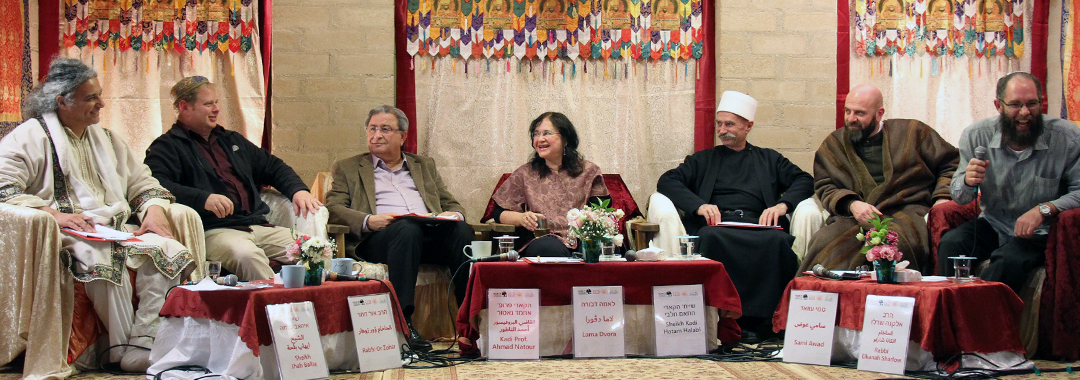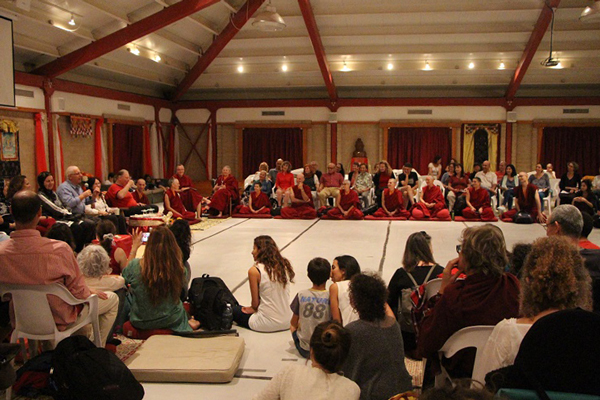
이스라엘 최초의 불교사원 에밤
[세계 속 붓다의 딸 #9]
라마 드보라 Lama Dvora
라마 드보라는 이스라엘에 국제안거평화센터인 에밤(Ehvam)을 설립하여 지도자로 활동하고 있으며 Method and Wisdom Association의 상임이사이기도 하다. 수학과 컴퓨터과학 분야에서 석·박사 학위를 받았으며 연구소, 금융기관, 학계에서 일했다. 30년 이상 불교와 다른 아시아종교를 연구했으며 여러 경전을 히브리어로 번역했다. 지난 20년간 불교 프로그램을 운영하여 이스라엘을 비롯한 다른 지역의 많은 학생들을 가르쳤다. * 에밤 홈페이지: www.ehvam.org
*인터뷰: 시드니 탐슨, *번역: 김은희
라마 드보라 Lama Dvora:
![]() 인터뷰를 시작하기 전에 먼저 우리를 기억하고 샤카디타 코리아 소식지에 참여할 기회를 주셔서 고맙다는 말씀을 드리고 싶습니다. 우리의 경험을 한국 샤카디타 회원분들과 나누게 되어 영광입니다. 여러분 모두가 잘 지내시기를 바라며 에밤에서 사랑을 보냅니다. 에밤은 이스라엘 최초의 불교사원입니다. 지금은 장소를 임대해서 활동하고 있지만요.
인터뷰를 시작하기 전에 먼저 우리를 기억하고 샤카디타 코리아 소식지에 참여할 기회를 주셔서 고맙다는 말씀을 드리고 싶습니다. 우리의 경험을 한국 샤카디타 회원분들과 나누게 되어 영광입니다. 여러분 모두가 잘 지내시기를 바라며 에밤에서 사랑을 보냅니다. 에밤은 이스라엘 최초의 불교사원입니다. 지금은 장소를 임대해서 활동하고 있지만요.
I would like to begin by thanking you for thinking of us, and for offering us this opportunity to participate in your newsletter. It is a great honor to share our experiences with the Korean Sakyadhita women. We wish you all the best and are sending our love from the first Buddhist monastery in Israel, part of the Ehvam Center in Israel, in its current temporary location.
시드니 Sydney:
![]() 젊은 시절 미국으로 이민 가셨다고 들었습니다. 이 질문은 다소 개인적이지만 미국으로 이민 가신 이유와 그곳에서 불교를 처음 접하게 된 이야기를 해주시겠습니까?
젊은 시절 미국으로 이민 가셨다고 들었습니다. 이 질문은 다소 개인적이지만 미국으로 이민 가신 이유와 그곳에서 불교를 처음 접하게 된 이야기를 해주시겠습니까?
I heard that you immigrated to the US while young. This question may be a bit personal, but could you tell us the reason why you immigrated to the US and how you first encountered Buddhism in America?
라마 드보라:
![]() 1984년 말에 남편이 루이지애나주립대학교 조교수로 채용되어 세 아이들을 데리고 미국으로 이주했습니다. 그곳에서 저는 박사과정을 마쳤고, 그 후에 저희 부부는 뉴저지에 새로운 일자리를 얻어 이사했습니다. 겉으로 보기에는 매우 세속적인 이유로, 생계와 교육 때문에 미국으로 가게 된 것이죠.
1984년 말에 남편이 루이지애나주립대학교 조교수로 채용되어 세 아이들을 데리고 미국으로 이주했습니다. 그곳에서 저는 박사과정을 마쳤고, 그 후에 저희 부부는 뉴저지에 새로운 일자리를 얻어 이사했습니다. 겉으로 보기에는 매우 세속적인 이유로, 생계와 교육 때문에 미국으로 가게 된 것이죠.
그러나 사실 저희 부부는 항상 정신적 성장을 추구했습니다. 미국에 오고 얼마 되지 않아 람 다스의 책과 테이프를 접하게 되었고 나중에는 그분과 함께 공부했습니다. 람 다스는 불자가 아니었지만 매사추세츠의 위빠사나센터에서 불교공부를 더 하는 것이 어떠냐고 저에게 권하셨어요. 그로부터 6년간 저희 부부는 센터의 10일짜리 안거에 참여하려고 일 년에 두 번씩 장거리 운전을 하게 되었죠.
하지만 저는 좀 더 깊은 가르침을 받고 싶다는 갈망이 생겼어요. 그러던 어느 날 뉴욕 센트럴 파크에서 열린 ‘마음을 바꾸는 날’ 행사에서 발표자인 게쉐 마이클을 만났고, 그의 스승인 켄쉬르 린포체 게쉐 롭상 따르친을 소개받았습니다. 켄쉬르 린포체는 세라사원의 주지를 역임한 존경받는 티베트 라마였으며, 이제는 사라진 위대한 스승 중의 한 명입니다. 저는 린포체를 근본스승으로 모셨습니다. 린포체는 마침 저희 부부가 살던 곳에서 가까운 뉴저지의 한 작은 사원에서 지내고 계셨어요. 스승님이 2004년에 입적하실 때까지 약 6년 동안 가르침을 받는 행운을 가질 수 있었습니다.
스승님이 입적하신 후에도 저희는 다른 제자들인 아트 엥글, 게쉐 마이클과 함께 공부를 계속했습니다. 아트 엥글은 켄쉬르 린포체를 오랫동안 시봉한 제자이고, 게쉐 마이클은 세라사원에서 게쉐 학위를 받은 제자이죠.
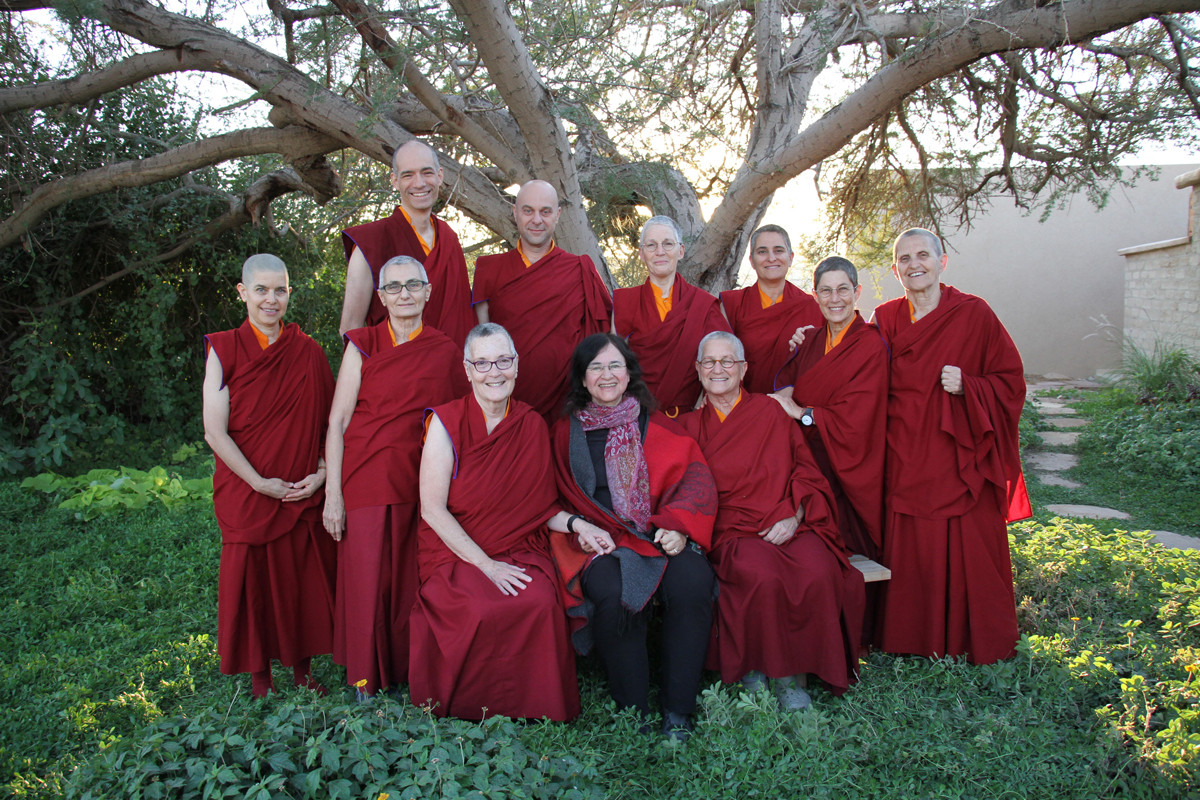
아래 줄 가운데가 라마 드보라이다
게쉐 마이클은 아시아고전연구소를 설립하여 린포체의 지도를 따라 18개의 교육과정을 만들었습니다. 티베트 겔룩 사원에서 스님들이 받는 교육을 모두 망라하는 이 과정은 서양식으로 진행됩니다. 부처님의 가르침에 대한 갈망으로 이 교육에 매료된 저는 다른 사람들을 가르치기도 했습니다. 처음에는 미국에서 영어로 가르쳤고, 그 다음에는 모든 자료와 경전을 히브리어로 번역하려고 노력했어요. 그리고 이스라엘에서 배움에의 열정이 있는 제자들에게 부처님의 말씀들을 가르쳤습니다.
게쉐 마이클은 또한 애리조나에 다이아몬드마운틴센터를 설립하여 불교고급과정을 가르쳤습니다. 저도 이곳에서 함께 공부를 이어갔어요. 이 프로그램은 6년 과정인데, 당시 센터의 상황이 매우 열악해서 수료하기까지 큰 노력과 인내와 독창성이 필요했습니다. 그동안 저는 주기적으로 이스라엘에 가서 학생들을 가르쳤습니다. 이 과정이 끝난 후, 우리는 30여 명의 상가 회원들과 함께 작은 건물을 짓고 우리 인생의 전환점이 되어 줄 3년, 3개월, 3일의 묵언안거를 진행했습니다. 안거가 끝날 무렵엔 수백 명의 이스라엘 학생들이 공부할 정도로 상가가 커졌습니다.
I moved to the US at the end of 1984 with my husband and three children, after my husband accepted an assistant professor position in Louisiana State University. While at LSU, I completed a PhD degree, and upon graduation, we both found work in New Jersey and moved to live there. So, the outer reason for the move was very worldly: just plain livelihood and education.
But in truth, we were always spiritual seekers. Soon after coming to the US we came across books and tapes by Ram Dass, and later also studied with him. Though not a Buddhist himself, it was Ram Dass who suggested that I continue with Buddhist studies at IMS, a Vipassana center in Massachusetts. For the next six years my husband and I would each make the long drive to IMS, twice a year, to participate in ten-day retreats.
Yet, in my heart, I longed for closer contact with a teacher. I met Geshe Michael when he came on stage during a ‘Change Your Heart Day’ in Central Park in New York, and through him I met his teacher, Khensur Rinpoche Geshe Lobsang Tarchin. Rinpoche, former Abbot of Sera Mey Monastery, was an incredible Tibetan Lama, one of a generation of giants which is all gone now, and he became my root Lama. He lived in a small temple in New Jersey, close to where we used to live. For about six years we had the incredibly good fortune to study with Rinpoche, until he passed away in 2004.
From there we continued our studies with two of his senior students: Art Engle, a long-time and very devoted student of Ken Rinpoche, and Geshe Michael Roach, an American monk who received the Geshe degree in the Sera monastic system.
Geshe Michael founded ACI, Asian Classics Institute, where he taught a series of 18 courses, which he compiled under Rinpoche’s guidance. These western style courses introduced students to the entire curriculum that monks cover during their course of study in a Tibetan Gelug monastery. With an insatiable thirst for the dharma, I was fascinated by these teachings, and then also taught them to others: first in English, in the US, and again, with a huge effort to translate all of the materials and readings into Hebrew, taught them to eager students in Israel.
Rinpoche left his body in 2004. I continued my study with Geshe Michael at Diamond Mountain, a center that he established in Arizona, where he taught the more advanced Buddhist materials. That track took another six years, and required great effort, perseverance and ingenuity, as conditions at Diamond Mountain at that time were very rugged. All the while, I was also going periodically to Israel to teach my students there. Once the course of study was complete, we built a cabin at Diamond Mountain Retreat Valley and, along with some 30 sangha members, we spent 3 years, 3 months and 3 days in a life-changing silent retreat.
By the time the retreat had ended, the Israeli sangha swelled to hundreds of students.
시드니:
![]() 티베트불교 경전을 히브리어로 번역하셨는데, 그 전에도 히브리어 경전이 있었나요? 만약 불교경전을 히브리어로 번역 한 최초의 경우라면 매우 기념비적인 일이 아닐 수 없는데요. 어떻게 번역하시게 되었는지, 또 번역하면서 겪은 어려움이나 보람을 이야기해 주세요.
티베트불교 경전을 히브리어로 번역하셨는데, 그 전에도 히브리어 경전이 있었나요? 만약 불교경전을 히브리어로 번역 한 최초의 경우라면 매우 기념비적인 일이 아닐 수 없는데요. 어떻게 번역하시게 되었는지, 또 번역하면서 겪은 어려움이나 보람을 이야기해 주세요.
You translated Tibetan Buddhist Sutras into Hebrew, but has there been Buddhist Sutras written in Hebrew before? If it was the first time that Buddhist Sutras were translated into Hebrew, it is a very monumental event. Could you please tell us the reason why you translated Buddhist Sutras into Hebrew, and also share the difficulties or rewarding feelings you experienced while translating.
라마 드보라:
![]()
이 질문을 해주셔서 감사합니다. 지난 20년 동안 걸어온 길이 제게는 무척 중요합니다.
그렇습니다. 제가 몇몇 경전을 번역하기 시작하면서 나중에는 티베트 불교에서 내려오는 경전과 논장을 히브리어로 번역했습니다. 제가 아는 한 이러한 규모의 번역은 제가 처음입니다. 테라바다 전통의 빨리어 경전을 번역한 다른 이스라엘 사람이 있기는 합니다. 제가 집중했던 것은 티베트 경전에 포함된 대승경전입니다. 제가 존경하는 스승님들을 통해 티베트 경전을 배웠기 때문이지요.
이런 대규모의 자료를 히브리어로 번역한 것은 처음이자 매우 의미 있는 일입니다. 사람들이 불교 경전을 접하고 실천하면서 삶이 변화했고, 부처님 법의 선함이 생활 속에서 자라나기 시작했습니다. 이를 지켜보는 것이 매우 만족스럽습니다!
저는 수학과 컴퓨터과학을 전공했습니다. 제가 어렸을 때만 하더라도 나중에 커서 티베트 경전을 번역하리라고는 상상도 못했어요. 하지만 그것은 일련의 자연스러운 과정이었습니다. 제가 이스라엘에서 가르치기 시작했을 무렵 법문을 시작하는 기도를 하는데, 수업을 하려면 번역된 자료가 필요하다는 생각이 들었고 그래서 번역을 시작하게 되었습니다. 번역을 시작하자마자 이 일이 일생의 소명이라고 느꼈습니다. 번역 작업은 순조롭게 진행되어 지금까지 열 권 이상의 책과 많은 논장을 번역했어요. 번역한 것을 다 합치면 일만 페이지가 넘을 거에요.
히브리어는 매우 신성한 언어이자 수천 년 동안 깊은 영적 내용을 담은 성서 언어입니다. 티베트어도 마찬가지입니다. 티베트에 불교가 전해지기 전에 티베트인은 유목하며 야크를 길렀습니다. 언어는 매우 단순했지만 문자가 없었어요. 나중에 왕이 인도에 대표단을 보내 문자를 가져왔습니다. 그 후로 천 년이 넘도록 이 매우 단순한 언어는 아마도 세상에서 가장 거룩하고 성스러운 내용을 기록하게 되었죠. 이런 의미에서 히브리어와 티베트어는 공통점이 많습니다. 티베트 경전을 히브리어로 번역하는 일은 두 명의 오랜 친구가 마침내 다시 만나서 특별한 무언가를 만들어내는 것과 같습니다.
번역에 한가지 어려움이 있었습니다. 경전 번역이 처음이라 히브리어 불교용어를 만들어야 했거든요. 이러한 선구적인 작업으로 탄생한 용어 중 일부가 현재 문화에 영향을 미치는 것을 볼 수 있습니다. 심지어 불교 공부를 하지 않은 사람들도 사용합니다. 사람들이 각자의 삶에서 영적인 의미를 받아들이고 표현하고 또 다른 사람들과 공유하는 용어를 만들게 되어 기쁩니다.
물론 또 다른 어려움이 있었는데, 번역을 하다 보니 컴퓨터 사용 시간이 많이 늘어났습니다. 힘들지만 계속하고 있습니다. 부처님의 가르침은 거대한 바다와 같으므로 작업에는 끝이 없습니다.
보람이 있냐고요? 큰 보람이 있습니다. 저는 번역을 하게 되어 매우 행복합니다. 특히 이중적인 의미가 있는 경전의 시구를 번역할 때 행복합니다. 이러한 시구는 깊은 의미를 전달하면서 운율, 아름다움, 우아함을 가지고 있습니다. 히브리어로도 비교적 쉽게 운율을 맞춘 문장을 만들 수 있습니다. 비록 티베트어와 히브리어의 구문 법칙에 큰 차이가 있지만 가능하면 운율을 유지하고 원형을 지키려고 합니다. 티베트인들은 때때로 전체 문장을 한마디로 응축하는 독특한 방법을 가지고 있기 때문에 번역이 항상 쉬운 것만은 아니죠. 원형을 지키기가 쉽지 않지만 최선을 다하고 있습니다.
특히 사람들이 제가 번역한 경전을 읽거나 기도와 수행서를 외우고 사용하는 것을 보았을 때 매우 보람찬데, 경전과 기도가 다른 이들 마음과 내 마음에 미치는 영향을 관찰합니다. 제 특기를 번역하는 데 사용할 수 있어 축복이라고 생각합니다.
Thank you for this question. It goes into the heart of the way I spent my life over more than twenty years now.
Yes, I translated Buddhist materials - some sutras, but also, later, Buddhist scriptures and commentaries, mostly from the Tibetan Canon - into Hebrew. To the best of my knowledge, I am the first one to do that on such a scale. I know of one other Israeli who is doing translation of materials from the Pali Canon, which contains Sutras of the Buddha that were preserved in the Theravada tradition. What I am concentrating on are mostly scriptures in the Mahayana tradition, that are included in the Tibetan Canon, as this is the tradition I met through my holy teachers.
Indeed, this is the first time that such materials are translated into Hebrew on a larger scale, and it is a very meaningful event. Once people started discovering them and practicing them, their lives started changing, and the goodness of Dharma started growing in their lives. This is so satisfying to watch!
Personally, my background is in mathematics and computer science. I never imagined, when I was younger, that I would end up being a translator of Tibetan scriptures. It was, however, a natural process: as I started teaching in Israel, the need arose to translate materials, beginning with the first refuge prayers that open a teaching, then reading materials for the classes, and that started the ball rolling. As soon as I started doing the translation work, it felt like I found my calling. It was going really well, and by now I have translated more than ten books and a lot of commentaries, altogether, more than ten thousand pages.
Hebrew is a very holy language. It is a biblical language, which for thousands of years carried deep spiritual content. But then, so is Tibetan. Before dharma reached Tibet, Tibetans were just nomads and yak herders, and Tibetan was a very simple language, which didn’t even have an alphabet, but later the king sent a delegation to India to get an alphabet, and the few survivors that returned brought with them an alphabet for Tibetan. Then, over more than a thousand years, this very simple language became a host to the most holy and sacred contents that probably exist in our world. So, in that sense Hebrew and Tibetan have a lot in common. So, the translation into Hebrew of Tibetan scriptures was like two old friends finally meeting again to produce something extraordinary.
As far as difficulties - well, one thing was, because this was never done before, I had to come up with a vocabulary, with a dharma terminology in Hebrew. And so that was pioneering work, and now I can see how some of this terminology has seeped into the culture, and people are using it already, even those who have never even participated in any dharma teachings. So, I am happy to see that it created a language which enables people to adopt and express spiritual meaning in their lives and share it with others. So that is one aspect.
Another kind of difficulty is, of course, that you just must spend a lot of time by the computer to do that. It is hard work, and it is continually ongoing. And since Dharma is a huge ocean, there is no end in the horizon to that work.
Is it rewarding? Extremely rewarding. I am very happy to do that. I am especially happy to translate the more poetic parts of the scriptures, where there is often a double play on meaning, where there is a meter, beauty and elegance, while delivering the deepest meaning. In Hebrew you can also make lines rhyme, with relative ease. And, as much as possible, I also try to keep a meter, and stick to the original Tibetan format, despite the big difference in syntax rules. This is not always easy, because Tibetans have their peculiar ways of abbreviating things where, in one word, they sometimes condense a whole sentence. So, that is not so easy to follow, but I am doing my best.
It is very rewarding, especially when I see people enjoy the translations and memorizing the prayers and sadhanas and use them, and I see the effect of those on their minds and on my own mind. So, I feel blessed to be able to use my skills in that way.
시드니:
![]() 불교경전을 히브리어로 번역하는 것 외에도 3년간의 안거를 성공적으로 마치셨죠. 또한 이스라엘 젊은이들이 이해하기 쉬운 방법으로 불교를 가르쳤으며 많은 불교 모임을 지속적으로 지원하셨습니다. 불교의 어떤 부분이 이스라엘 젊은이들에게 호소력이 있다고 생각하십니까?
불교경전을 히브리어로 번역하는 것 외에도 3년간의 안거를 성공적으로 마치셨죠. 또한 이스라엘 젊은이들이 이해하기 쉬운 방법으로 불교를 가르쳤으며 많은 불교 모임을 지속적으로 지원하셨습니다. 불교의 어떤 부분이 이스라엘 젊은이들에게 호소력이 있다고 생각하십니까?
Aside from translating the Buddhist Sutras into Hebrew, you also successfully completed a three-year retreat, taught Buddhism to Israeli young people in a way that was easy for them to understand, and continuously supported many Buddhist gatherings. What part of Buddhism do you think is strongly appealing to Israeli young people?
라마 드보라:
![]()
이스라엘은 유대교, 기독교, 이슬람 등 세 가지의 위대한 종교의 요람입니다. 이스라엘은 공식적으로 유대교 국가이지만 대부분의 사람들은 유대교를 잘 따르지 않고 서구적인 생활을 합니다.
이스라엘 젊은이들에게 군복무는 의무인데, 남자는 3년, 여자는 2년 동안 복무합니다. 군복무를 마치면 많은 젊은이들이 변화를 원하기도 하고 더 큰 지평을 찾아 여행을 하고 싶어합니다. 주로 인도에 가거나 태국 같은 아시아 국가를 방문합니다. 여행지에서 다양한 정신적 스승과 가르침, 불교를 만난 경험을 가지고 이스라엘로 돌아옵니다. 결과적으로 이스라엘 사람들이 아시아의 종교에 대한 관심이 많기 때문에 이런 의미에서 젊은이들은 이미 예비 지식을 가지고 있습니다.
좀 더 나이 든 사람들 또한 관심이 많습니다. 저 자신을 포함하여 이스라엘의 많은 사람들이 홀로코스트 생존자들의 2세이거나 3세입니다. 이스라엘은 많은 전쟁을 겪었습니다. 수 많은 사람들이 친인척 등 가까운 사람을 잃었습니다. 아시다시피 사람은 고통을 당하면 정신수양에 관심이 많아집니다. 그래서 이스라엘은 정신적 가르침에 대한 준비가 되어 있고 개방적이라고 생각합니다. 제가 이스라엘에서 최초로 부처님의 가르침을 편 것은 아니지만, 가장 먼저 히브리어로 가르쳤으며 불교 경전을 히브리어로 번역했습니다.
불교는 다양한 측면과 특징들이 있습니다. 어떤 부분은 이해하기 다소 쉬운 것도 있습니다. 도덕에 대한 가르침, 사랑과 자비에 대한 가르침, 신심에 대한 가르침 등은 3대 주요 일신교를 포함한 다른 종교와 공통적인 가르침입니다.
유대교에서는 도덕성과 정의를 강조하므로 이곳 사람들은 그런 부분에 있어서 부처님 가르침을 쉽게 받아들입니다. 그러나 신에 대한 두려움, 율법에 대한 두려움 또는 문화적 규범과는 반대로 불교에서 도덕의 기초는 카르마의 법칙과 인과의 법칙입니다. 카르마의 법칙을 따르는 것에는 우리의 삶을 진정으로 변화시키는 힘이 있지만 동시에 도전적입니다. 수행자들은 자신의 선택에 대한 책임을 져야 합니다. 또 카르마의 법칙을 따르는 일에 이기적인 이유가 있는지, 편견이 있는지, 무조건적인 믿음과 비이성적인 전통을 따르는 것인지 판단해야 합니다. 카르마의 법칙을 이해함으로써 학생들의 삶이 변화하고 행복해지는 것을 보면 큰 보람을 느낍니다.
사랑과 자비에 대한 가르침들이 사람들 마음에도 호소합니다. “네 이웃을 네 자신처럼 사랑하라”는 경구는 우리 문화에 깊이 뿌리 내렸음에도 불구하고 사람들은 종종 인식하고 극복해야 할 민족적·인종적 경계를 가지고 있습니다. <선한 마음을 갖는 방법>이라는 로종(Lo Jong)의 혁신적인 가르침을 찾아보시길 권해드립니다.
스스로를 독립적이며 자립적이라고 생각하는 문화에서, 때로는 더 헌신적이고 마음을 여는 수행을 받아들이는 것이 어렵기도 합니다. 일반적으로 서양문화에서는 대승불교에서 필수로 여겨지는 스승에게 겸손하고 복종하는 자세를 받아들이기 힘든데, 사브라의 나라인 이스라엘에서도 마찬가지입니다. 사브라는 이스라엘인의 별명으로 선인장의 이름에서 따왔습니다. 겉은 가시가 많아 보여도 속은 친절한 모습을 빗댄 것이죠.
우리가 삶에서 받는 스트레스의 양을 고려할 때 명상에 대한 가르침은 매우 매력적입니다. 하지만 학생들이 스트레스 감소를 넘어서는 단계까지 수행이 진전되도록 정기적으로 수행을 하는 것은 여전히 어렵습니다.
물론 불교는 궁극적인 지혜와 해탈과 깨달음으로 이어지는 공과 지혜에 대한 숭고한 가르침을 줍니다. 사람들은 고통을 멈추고 지속적인 행복을 찾기를 원합니다. 지혜와 올바른 견해가 남을 비난하거나 외부에서 행복을 찾는 것을 대체하고, 그 대신 미덕을 행하고 자신과 주변 사람들을 위해 더 행복한 세상을 만들고자 사람들이 불교의 가르침을 따라 삶을 바꾸는 것을 지켜 보는 것은 매우 보람찬 일입니다.
Israel is the cradle of all three great monotheistic traditions: Judaism, Christianity and Islam. It is officially a Jewish state, but most people are not observant and live a western lifestyle.
Young people in Israel have a mandatory military service. Men must serve for three years; women must serve for two. Once done with their service, many of them have a strong urge to change, to seek bigger horizons, to travel. Many go to India and other Asian countries, like Thailand, where they are exposed to a variety of spiritual teachers and teachings, Buddhist and other, and upon returning to Israel, they bring with them the impressions that they collected. As a result, there is a lot of interest in Asian spirituality here in Israel, so in that sense, young people in Israel were already primed for this knowledge.
But there is also interest among older people. Many people in Israel, including myself, are a second or third generation to Holocaust survivors, and the country has seen many wars. Many people have lost relatives or are close to other people who lost relatives. And as we know, suffering opens our heart to spirituality. So, I think there is a readiness and an openness to spiritual teachings here in Israel, and although I was not the first one to teach Dharma in Israel, I was the first one to do it in Hebrew, and to translate all those sacred texts into Hebrew.
Buddhism has many parts and aspects, some easier to understand than others. Some parts are common to other authentic spiritual traditions, including the three main monotheistic religions, such as the teachings on morality, the teachings on love and compassion, and the teachings on devotion.
There is a great emphasis in Judaism on morality and justice, so people here connect easily to that part in the dharma. However, as opposed to the fear of god, fear of the law, or just cultural norms, in the Buddha’s teachings the basis for morality is the principle of karma and the law of actions and consequences. Following the principle of karma has the power to truly transform our lives, but at the same time can be challenging: it requires that practitioners take responsibility for their choices, recognize motivations that may be self-serving, biased, based in unexamined beliefs and traditions or plain irrational. It has been quite rewarding to witness how the understanding of the laws of karma has transformed students’ lives and contributed to their happiness.
The teachings on love and compassion also appeal to peoples’ hearts. “Love thy neighbor as yourself” is deeply ingrained in our culture, but people often have ethnic or racial lines to recognize and to cross. Here come the transformative teachings of Lo Jong - Developing the Good Heart.
In a culture where people are raised to view themselves as independent and self-reliant, it is sometimes a challenge to connect to the more devotional, heart-opening practices. Humility and surrender to a teacher, an essential ingredient on the Mahayana path, can be equally challenging in western culture in general, and in a country of sabras, as Israelis are often nicknamed after the fruit of a cactus, which is prickly on the outside, yet sweet on the inside.
Teachings on meditation are hugely attractive, given the amount of stress we live in, but then the challenge remains to get students to maintain a regular practice, reaching far beyond stress-reduction.
Of course, Buddhism also offers the sublime teachings on emptiness and wisdom, which can lead to ultimate wisdom, liberation and enlightenment. People want to stop their suffering and find lasting happiness, and it is very rewarding to watch how those teachings affect peoples’ lives, when wisdom and correct view replace blaming and the pursuit of outer sources of happiness, and when instead, people start using that understanding to do virtue and create a happier world for themselves and those around them.
시드니:
![]() 이스라엘에서 최초의 라마가 되셨다고 들었습니다. 이스라엘의 라마로서 어떤 소명이나 목적이 있으신지요?
이스라엘에서 최초의 라마가 되셨다고 들었습니다. 이스라엘의 라마로서 어떤 소명이나 목적이 있으신지요?
I understand that you also became the first Lama in the Israel area, and so what calling or purpose do you think there is for you as a Lama in the area?
라마 드보라:
![]()
이스라엘에는 부처님의 가르침을 전하는 법사가 많습니다만 대부분 외국에서 온 분들이라 히브리어로 가르치지 않습니다. 또 안정적인 상가가 없습니다. 그런 의미에서 우리가 특별하다고 할 수 있습니다. 저는 이스라엘에서 살고, 히브리어로 가르치고, 건실한 상가와 작은 사원을 가지고 있습니다. 이스라엘에서 최초의 사원이지요.
저의 가장 큰 목표는 이스라엘 불자들이 일시적이고 궁극적인 불교의 목표를 달성하는데 도움을 주는 것입니다. 물론 쉬운 일은 아닙니다. 먼저 목표달성을 위해 저는 앞서 설명한 것처럼 불교 경전을 히브리어로 번역하는데 수 년을 보냈습니다.
그리고 수백, 수천 시간을 들여 부처님 법을 가르쳤습니다. 모든 법문을 기록해서 온라인에서 무료로 제공합니다. 부처님의 가르침에 관심이 있는 모든 이스라엘인들에게 도움을 주기 위함이죠.
우리는 대승불교를 따릅니다. 자비심을 키우고 다른 사람을 돌보는 것을 강조합니다. 학생들의 마음에 자비심이 자라나 공동체에 참여하게 됩니다. 학생들은 노인이나 외로운 사람들, 장애인들을 돌봅니다.
이 곳 중동 지역에는 주변 아랍 국가들과의 사이에 폭력과 전쟁이 계속되고 있습니다. 심지어 국내에서도 아랍인과 다른 소수 민족에 대한 적개심과 차별이 존재합니다. 애리조나에서 3년간의 안거를 마치고 이스라엘로 돌아오자 폭력과 침략의 카르마가 눈에 띄었어요. 이 지역에서는 오랜 전쟁과 유혈 사태를 겪었습니다. 우리는 비폭력과 자비를 추구하는 불교의 지혜로 이 지역에 평화를 가져오는 데에 적용하려 노력합니다. 아직도 해야 할 일이 많은 건 확실합니다. 하지만 앞으로 잘 진행되어 더 많은 일을 할 수 있게 되기를 희망합니다.
There are many teachers who teach Dharma in Israel, however most of them are visitors, do not teach in Hebrew, and do not have a stable sangha here. So, we are unique in that sense: I am spending most of my time in Israel, I teach in Hebrew, and we have a large and strong sangha, as well as a small monastic sangha, which is in fact the first Buddhist monastery in Israel!
First and foremost in my mind is to help dharma students in Israel make progress towards achieving the temporary and ultimate goals of Buddhism. That is, of course, no small undertaking. As part of that wish, I have invested many years in translating Buddhist scriptures into Hebrew, as I described above.
Then come hundreds, if not thousands of hours of teachings. All teachings are recorded, transcribed, and available free of charge online, to benefit the many Israelis who are attracted to dharma.
We come from the Mahayana tradition, which emphasizes the teachings on compassion and care for others, and a natural outcome of the growing compassion in students’ hearts is their engagement with the community. Students adopt elderly people or lonely or otherwise challenged people.
In this area in the Middle East there is an ongoing state of violence and war with the surrounding Arab countries. Even within the country, animosity and discrimination exist towards Arabs and other minorities. When I first returned to Israel after having finished my three-year retreat in Arizona, what stood out to me was the karma of violence and aggression in this region. With a long history of war and bloodshed in the region, our work focuses on the application of Buddhist wisdom, the ways of non-violence and compassion, in our efforts to help bring about peace in the region. No doubt, there is still a lot of work ahead of us, and we hope to be able to grow and expand it in the future.
시드니:
![]() 샤카디타 호주대회에서 처음으로 불교 사회단체인 에밤에 대해 알게 되었습니다. 한국 샤카디타의 회원들에게 에밤을 소개해주시고 에밤의 비전과 활동, 그리고 지금까지 어떤 성과가 있었는지 이야기 해주시겠습니까? 앞으로의 계획도 알려주십시오.
샤카디타 호주대회에서 처음으로 불교 사회단체인 에밤에 대해 알게 되었습니다. 한국 샤카디타의 회원들에게 에밤을 소개해주시고 에밤의 비전과 활동, 그리고 지금까지 어떤 성과가 있었는지 이야기 해주시겠습니까? 앞으로의 계획도 알려주십시오.
At the Sakyadhita conference in Australia, we heard, for the first time, about the Buddhist social organization, Ehvam. Could you introduce Ehvam to Sakyadhita Korea’s Buddhist women and share Ehvam’s vision, activities and accomplishments so far? Please also tell us Ehvam’s plans for the future.
라마 드보라:
![]()
2019년 호주에서 열린 샤카디타 대회에 참가한 존경하는 많은 분들에게 국제 평화 센터인 에밤을 소개하게 되어 영광이었습니다.
에밤은 폭력이 난무하는 중동 지역의 사람들을 비롯하여 전 세계인의 마음에 자리잡고 있는 평화를 염원하는 기도와 깊은 열망을 뒷받침 하기 위해 설립되었습니다.
에밤(Ehvam)이라는 이름은 불교 경전에서 영감을 얻은 것으로, 우리가 살고 있는 세상을 뜻하는 산스크리트 음절 ‘에Eh’와 이 세상에 살고 있는 존재를 의미하는 ‘밤Vam’으로 구성됩니다. 합성어인 에밤은 완벽하고 평화로운 세상을 만든다는 뜻입니다. 여기 사는 사람들도 행복하고 평화롭습니다.
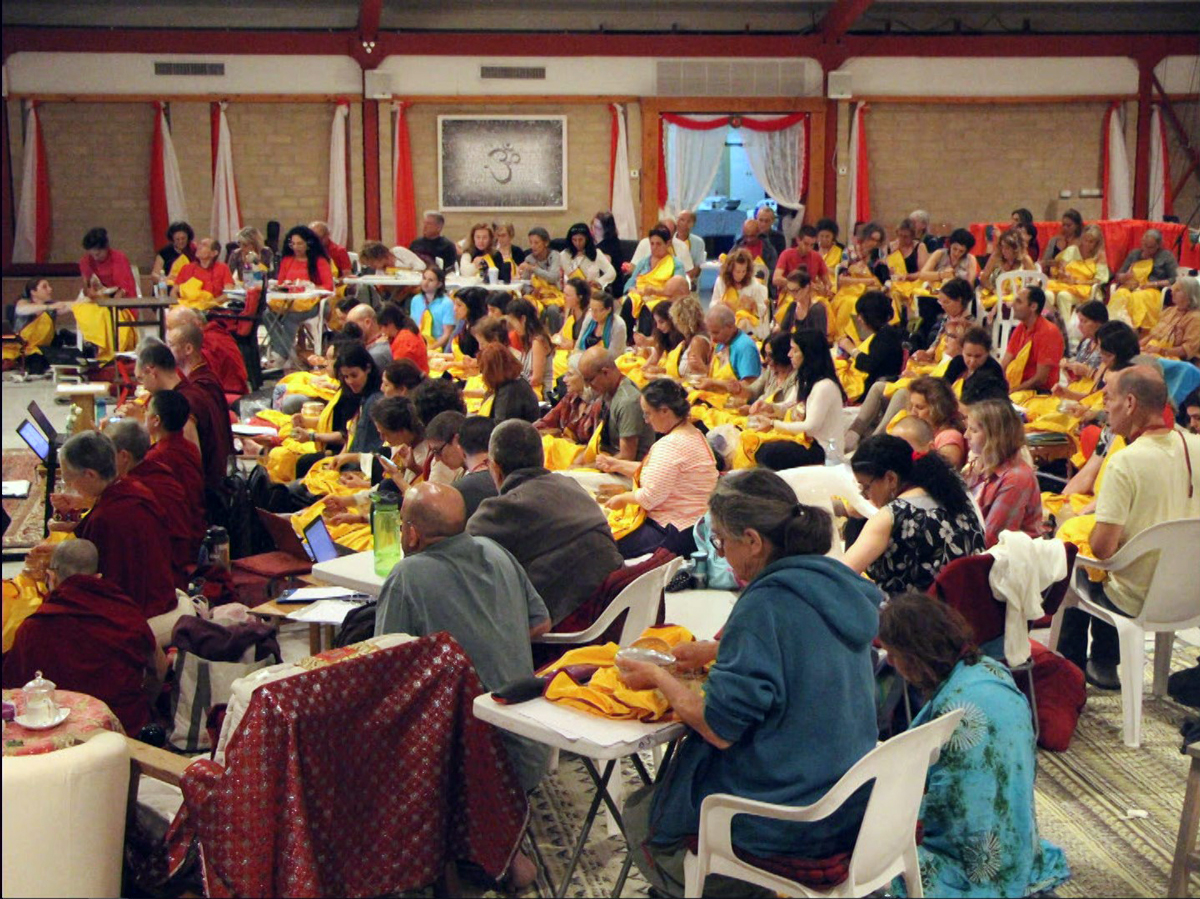
에밤사원의 법회 모습
전쟁이나 평화가 어느 한쪽에 존재하는 것이 아니라 원인과 결과에 따라 발생한다는 것을 이해하는 지혜가 에밤의 토대입니다. 전쟁과 평화는 우리 각자가 마음 속에 가지고 있는 정신적 각인에서 비롯됩니다. 평화롭고 조화로운 세상에 살고 싶다면 마음 속에 평화의 씨앗을 심는 법을 배워야 합니다. 우리의 마음이 평화로울 때만 세상의 평화를 이룰 수 있습니다.
이러한 이해를 바탕으로 에밤은 두 가지 주요 활동에 중점을 둡니다.
먼저 외적 수양으로 지역 사회를 위해 일하는 것입니다. 바로 평화의 씨앗을 심는 일이죠. 화합을 증진하고, 분열을 봉합하고, 다른 계층, 다른 국적과 신념을 가진 사람들을 모아 진정한 우정과 서로 감사하는 마음을 만들고, 평화와 행복이라는 공통의 목표를 실현할 다양한 프로젝트를 통해 씨앗을 키울 수 있습니다.
다음은 내적 수양으로 마음공부를 하는 것입니다. 부처님의 가르침을 공부하고, 사랑과 친절, 자비심, 평등, 보리심과 같은 고귀한 태도를 배양하고, 명상 하고, 안거에 참여하여 집중 수행을 하여 우리의 마음을 정화하고, 지혜를 기르고, 자기자신의 더러움이나 잘못된 견해, 부정적인 감정을 줄이고 제거합니다.
우리는 이 두 가지 수양을 함께 실천할 때 엄청난 잠재력을 가진 상향 나선을 만들 수 있으며, 마음속에서 깊은 변화가 생길수록 외부에서 경험하는 세계에 더 심오한 변화가 생긴다고 믿습니다. 부처님의 가르침에 귀의함으로써 높은 정신적 존재가 되고, 점점 더 많은 사람들이 공동으로 평화롭고 조화로운 세계를 만드는데 영감을 줄 수 있습니다.
우리는 이스라엘의 활기찬 영적센터에서 에밤의 비전을 구현하기 시작했습니다. 아직까지는 장소를 임대해서 운영하고 있지만 이미 그 효과를 느끼고 있습니다.
에밤에서는 다음과 같은 일을 합니다.
- 수백명의 학생들이 진지하고 행복한 마음으로 부처님의 가르침을 배웁니다.
- 히브리어로 진행되는 수십 개의 강좌와 워크숍이 무료로 온라인으로 제공됩니다. 수천 명의 이스라엘 사람들이 관심있게 찾아봅니다.
- 우리는 자신의 삶을 수행과 봉사에 헌신하고 번성하는, 이스라엘 최초의 사원을 가지고 있습니다.
- 상가 구성원들은 관대함, 올바른 견해, 자비의 원칙을 실천하며 외로운 사람들과 병자를 돌봄으로써 공동체에 더 큰 혜택을 가져오는 프로젝트에 참여합니다.
- 우리는 다양한 전통과 국적의 아랍 파트너들과 평화 지도자들이 참여하는 만남과 협력, 그리고 강화된 평화 협약을 주도합니다.
- 불교 선사와 외부지도자를 모시고 지식을 높이기 위해 노력합니다.
- 현재 머무는 사막 지역에서 지역 사회와의 관계를 발전시킵니다.
- 심층 안거를 원하는 상가 구성원을 지원합니다.
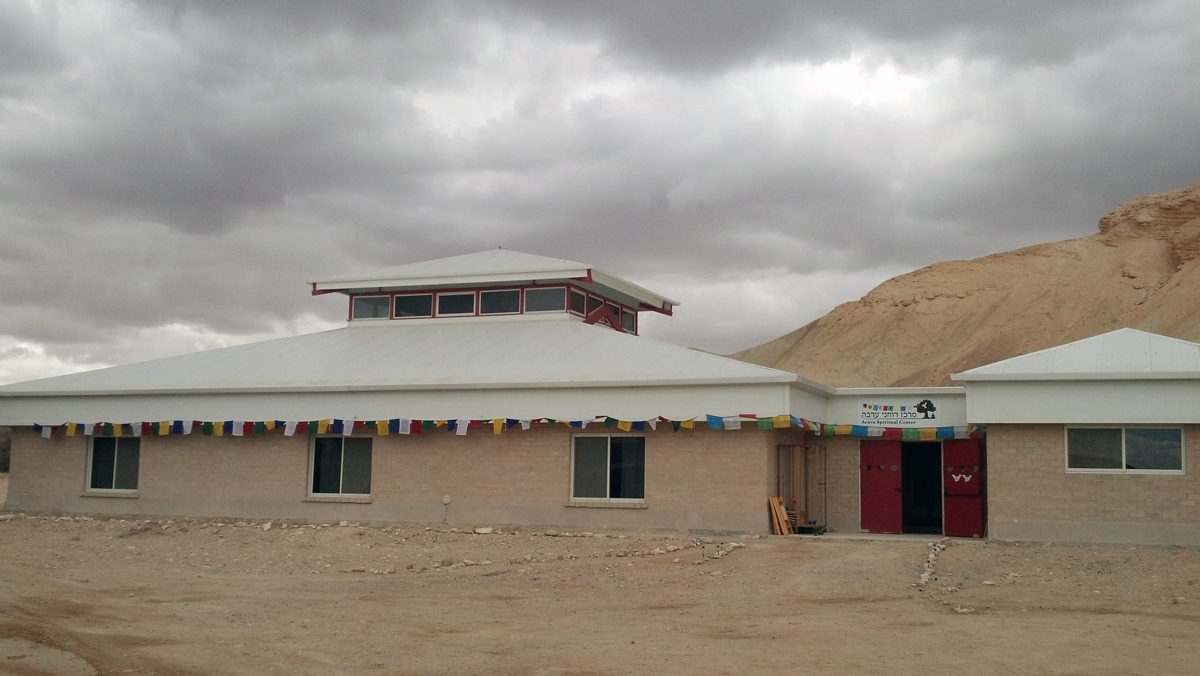
에밤사원의 메인 홀
우리는 영향력 있는 정신적 지도자와 평화 지도자를 키우는 것을 목표로 합니다. 영향력 있는 지도자란 큰 자비심과 무조건적인 사랑과 깊은 지혜를 양분 삼아 주위 공동체와 사람들의 마음에 평화를 깃들게 하고 조화로운 삶을 살 수 있도록 자신의 삶을 바칠 준비가 된 사람입니다. 세상에서 이런 사람들을 찾아보기가 힘들죠. 에밤은 세상의 빛과 축복이 될 이러한 지도자를 교육할 적합한 환경을 만들기 위해 노력합니다.
에밤은 지금까지 장소를 빌려 활동했는데, 임대기간이 만료되었어요. 앞으로 소중한 사찰을 포함해 ‘달마평화센터’를 짓고 활동을 지속할 땅을 마련하는 데에 큰 어려움을 겪고 있습니다.
여러분을 사랑과 평화의 거룩한 노력에 초대합니다. 중동의 국제영적평화센터인 에밤이 고귀한 비전을 성취하도록 도와주실 후원자분들을 모실 수 있기를 희망합니다.
에밤이 자리잡으려면 많은 자금이 필요합니다. 모든 도움에 미리 감사드립니다. 도움을 주시려면 메일주소(info@ehvam.org)로 연락해주세요. 감사합니다.
It was a great honor to introduce Ehvam - an International Spiritual Center for Peace - to the many honorable participants of the 2019 Sakyadhita conference in Australia.
Ehvam is being established to address the deep aspirations and prayers for peace, in the hearts of people in the violence-ridden Middle East, and actually in the entire world.
The word Ehvam is inspired by Buddhist scriptures, and is composed of the Sanskrit syllable Eh which symbolizes the world we live in, and Vam - the beings that reside in this world. Taken together, Ehvam is the idea of creating a perfect, peaceful world, whose residents, too, are happy and peaceful.
The roots of our vision for Ehvam lie in the wisdom that understands that neither war nor peace exist from their own side, and both arise in dependence on their causes and conditions; both are projected from the mental imprints that each one of us carries in their mind, and if we wish to live in a peaceful and harmonious world, we must learn how to plant the seeds of peace within our own hearts. It is only when our minds are at peace, that we will be able to witness peace on the outside.
Based on that understanding, Ehvam focuses on two main types of activities:
Work on the outside, in our communities, where we plant the seeds for lasting peace by engaging in a variety of projects to promote harmony, bridge divides, bring people together from different segments of society and different nationalities and faiths to create genuine friendships, mutual appreciation and work together to realize our common quest for peace and happiness.
Work on the inside, to purify our minds, gain wisdom, reduce and eliminate our own defilements, wrong views and negative emotions, etc., through the study of dharma, the cultivation of noble attitudes such as loving kindness, compassion, equanimity, bodhichitta, the practice of meditation and through intensive practice in deep retreats.
We believe that when those two aspects are practiced together, they can create an upward spiral with enormous potential, and that the deeper the transformation on the inside, the more profound the transformation in the world that we experience on the outside. By immersing ourselves in the dharma, we become high spiritual beings, able to inspire ever growing groups of people to jointly create a world of peace and harmony.
We have begun implementing Ehvam’s vision in our vibrant spiritual center in Israel, which we operated so far in a temporary, leased location (see pictures attached) and are already feeling its impact.
At Ehvam
- Hundreds of students study and practice the dharma, seriously and happily;
- Dozens of courses and workshops are available online, free of charge, all in Hebrew, attracting many thousands of interested people in Israel;
- We have a thriving monastic sangha, first of its kind in our region, who are devoting their lives to practice and service;
- Sangha members are engaged in projects that benefit the larger community, practicing the principles of generosity, right view and compassion, taking care of the lonely and the sick;
- We initiate contacts, collaborations and uplifting peace conventions joined by our Arab partners and peace leaders from various traditions and nationalities;
- We host guest teachers and Buddhist masters to enrich our knowledge;
- We cultivate relationships with the local communities in our current desert location;
- We support the many sangha members who wish to perform deep retreats.
In Ehvam, we aim to train generations of powerful spiritual leaders and peace leaders, who, motivated by great compassion, unconditional love, and deep wisdom, are prepared to devote their lives to benefit the causes of peace and harmony in the hearts and minds of people and communities around them. Such people are rare in our world. In Ehvam we strive to create the appropriate conditions to train such leaders, sources of light and blessing in our world.
As our lease in our current location has expired, (the attached pictures represent the old location), Ehvam is currently facing a major challenge to find a permanent location where we can establish our Dharma and Peace center, including our precious monastery, and work towards our long-term vision.
We extend an invitation to each one of you to please join us in our holy effort of love and peace. We will be thrilled to count you among our partners and supporters, in any way you see fit, to help us fulfil our noble vision of Ehvam - an International Spiritual Center for Peace in the Middle East.
We would be grateful for every help you can offer. At this time, we have an immediate need for funds to establish a permanent place for Ehvam.
If you feel called to help, please reach out to us at info@ehvam.org.
시드니:
![]() 마지막으로 현재 유행하는 코로나바이러스감염증-19(이하 코로나19)를 언급하지 않는 것은 불가능합니다. 그곳 생활은 어떤가요? 코로나19 위기로부터 우리가 배워야 할 지혜가 있을까요?
마지막으로 현재 유행하는 코로나바이러스감염증-19(이하 코로나19)를 언급하지 않는 것은 불가능합니다. 그곳 생활은 어떤가요? 코로나19 위기로부터 우리가 배워야 할 지혜가 있을까요?
Lastly, it is impossible not to mention the pandemic Covid-19 in 2020. Could you tell us what life is like where you are, and share some wisdom that we need to learn from this corona-virus crisis?
라마 드보라:
![]()
이스라엘에도 다른 나라만큼 힘들지는 않지만 코로나19가 유행하고 있습니다. 대부분의 사람들은 지시에 따르면서 마스크를 쓰고 사회적 거리를 유지합니다.
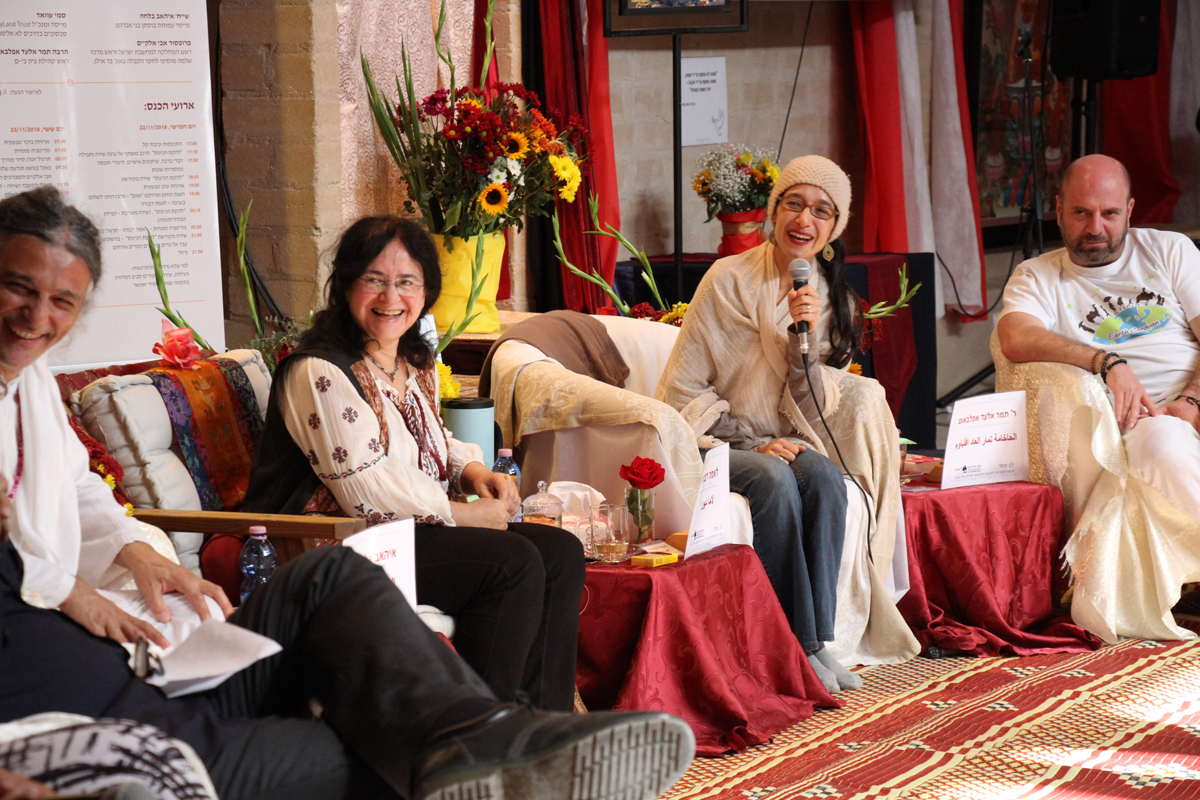
제2회 에밤평화대회
바이러스가 창궐하기 전 우리는 안거 프로그램을 기획하고 있었습니다. 돌이켜 보니 팬데믹 직전에 고급학습과정 프로그램의 첫 단계를 마쳐서 정말 다행이라고 생각합니다. 또 2020년 2월에 제2회 에밤평화대회를 성공적으로 개최했습니다.
코로나19는 전 세계에 영향을 미치는 전염병입니다. 불교 수행자의 관점에서 볼 때 부처님의 가르침 중 몇 가지 핵심점이 눈에 띕니다. 아래에서 몇 가지만 나열하겠습니다.
생명 존중: 우리는 인간과 비인간의 모든 생명을 존중해야 합니다. 주변의 야생 생물을 존중하지 않았기에 바이러스가 종의 장벽을 뛰어넘어 수백만 명의 사람들에게 해를 끼치고 있습니다. 인간이 모든 중생을 돌보지 않는다면, 미래에도 계속해서 비슷한 사태가 발생하게 될 것입니다.
마음 챙김과 개인의 책임: 우리는 책임감을 가지고 자신이 하는 일을 잘 살펴야 합니다. 타인은 물론 고위험군을 염두에 두고 전염병의 확산을 예방하기 위해 손씻기, 사회적 거리두기 등 개인위생수칙을 잘 지켜야 합니다.
인연법: 부처님의 가르침은 인간과 인간이 아닌 존재의 상호 의존성에 대해 가르쳐줍니다. 우리의 선택은 자신과 주변인에게 영향을 미치며, 다른 사람들의 선택도 우리에게 영향을 미칩니다.
평등: 물론 질병에 더 취약한 사람들이 있지만 바이러스 자체는 국적, 종교, 재능, 부, 지능을 구별하지 않습니다. 나와 친밀한 사람이든 지리적으로 멀리 있든 아는 사람이든 모르는 사람이든 부지불식간에 공격합니다. 지구상에 존재하는 인간으로서 우리는 코로나19라는 공통된 난관을 겪고있습니다.
무상: 코로나19 때문에 사람들이 죽습니다! 그리고 아직 감염되지 않은 사람들을 위해 한마디 하자면 이번 사태를 통해 우리는 모두 죽는다는 것과 무상의 실상을 깨닫고 삶에 더 영적으로 접근할 수 있습니다.
고통이라는 진리: 전염병, 사망자, 슬픔에 빠진 유족, 고독감, 기타 정신적인 시련으로 지역사회가 고통받고 있습니다. 예방수칙, 실업, 수입을 잃어 생겨난 경제적 반향은 정신적 스트레스를 불러옵니다. 불교를 공부한 불자들은 이번 사태를 겪으며 이 세상에는 진정한 피난처가 없다는 것을 다시 한번 깨닫습니다. 그러므로 우리는 해탈을 위해 노력해야 합니다.
자비심: 팬데믹으로 인한 큰 고통은 우리가 자비심을 내어 고통을 겪고 있는 주변 사람들을 도와 주어야 한다는 것을 가르쳐줍니다.
인내: 코로나19는 수개월에서 심지어 몇 년 동안 지속할 가능성이 높으므로 이 역경을 이겨내는 인내와 불굴의 의지를 배양하고 심지어 배려도 하면서 대처해야 합니다.
치유: 만약 이 팬데믹이 지구상의 사람들이 겪어야 하는 집단적 카르마라고 한다면 우리는 위의 모든 특성(및 언급되지 않은 다른 많은 특성)으로 인해 매우 긍정적인 카르마를 쌓게 될 것입니다. 우리가 다른 사람들과 서로의 입장이 되어보고, 타인을 돌보고 그들의 고통을 완화시키기 위해 노력할수록 더 큰 긍정적 카르마가 쌓이게 되고 이 역병을 끝낼 수 있습니다.
결국 코로나19는 하나의 거대한 자가치유의 과정이라고 볼 수 있습니다. 살아남은 사람들은 궁극적으로 더 훌륭하고 현명하며 남을 배려하는 자비로운 존재가 될 수 있습니다.
그렇게 평화와 안녕이 온 세상에 퍼지기를 바랍니다.
Like most of the world, Israel too was hit by the virus, though probably not as hard as other countries. People mostly obey instructions, wear masks, and keep distance.
As it turns out, even before the virus broke out, we had plans to go into a long retreat as a group. Looking back, we feel fortunate to have been able to complete the first phase of our advanced studies program just before the breakout and were also able to successfully hold the 2nd Ehvam Peace Conference in February 2020 (see pictures attached).
Corona virus is a pandemic affecting the whole world. Viewing it from the perspective of a Buddhist practitioner, it is a striking manifestation of several key ideas in the Buddha’s teaching. I will list just a few of them below.
Respect for life – We must respect life, human and non-human alike. Due to our disrespect for the wildlife around us, we are witnessing a virus that “jumped” across the species barrier and is now harming millions of people. And the danger still exists for such future occurrences, unless we humans are able to include all sentient beings in our care.
Mindfulness and personal responsibility - Covid19 is forcing us to take responsibility for each other and mind what we are doing, for our own sake but also for others. Thinking of others and bearing in mind those who are at a higher risk, we apply the various mitigating measures to protect ourselves and others and prevent the spread of the disease.
Interdependence – Dharma teaches us about the interdependence between beings – human and non-human alike. Choices we make are bound to affect ourselves and those around us, and similarly, choices that others make will affect us.
Equanimity – Although some segments of the population are more vulnerable to the disease than others, the virus itself does not distinguish between nationalities, religions, talents, wealth, intelligence, etc. It can hit people close to us and those who are far, those we know and those we don’t. Covid puts us in touch with our common predicament as human beings on this planet.
Impermanence – Covid kills people! And for those of us who haven’t been hit yet – it brings us closer to the reality of our own mortality and impermanence and opens the possibility of a more spiritual approach to life.
The truth of suffering – Our communities are suffering – from the disease itself, lives that are lost, grieving families left behind, loneliness and other mental hardships in the wake of the preventive measures and the economic repercussions of lost income and livelihood. To an educated Buddhist it all serves as a stark reminder that there is no real refuge anywhere in samsara, and we should therefore strive for freedom.
Compassion – The great suffering caused by the pandemic calls for our compassion, to come and help those around us who are suffering.
Patience – Covid is likely to last many months and even years, and thus requires that we cultivate our patience and perseverance, and even grace, in the face of this adversity.
Healing – If the pandemic itself is a collective karmic ripening for humans on this planet, all the above qualities (and many others that were not mentioned) are causing us to collect very positive karma. The more we are able to exchange self and others, take care of others and work to alleviate their suffering, the more positive karma is accumulated, planting the karmic seeds to end this plague!
So, in the end, it is one big self-healing process, and those of us who survive it might all come out its other end as better, wiser, more caring and more compassionate beings.
May it be so, and may peace and well-being prevail.
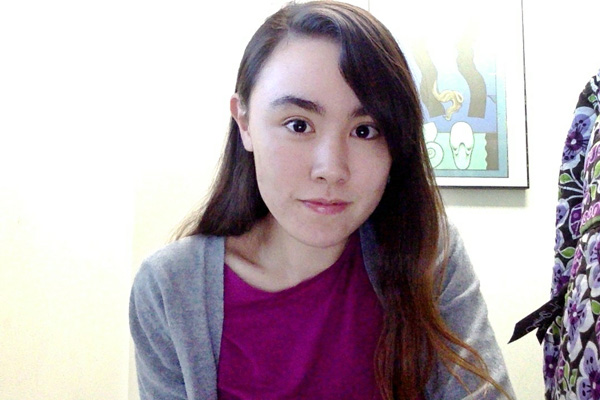 *시드니 톰슨은 샤카디타 코리아 홍보간사를 맡고 있으며, 샤카디타 코리아 뉴스레터 영문판 에디터로 일하고 있습니다.
*시드니 톰슨은 샤카디타 코리아 홍보간사를 맡고 있으며, 샤카디타 코리아 뉴스레터 영문판 에디터로 일하고 있습니다.
*Sydney Thompson is Sakyadhita Korea’s publicity assistant and writer for Sakyadhita Korea’s English content.

